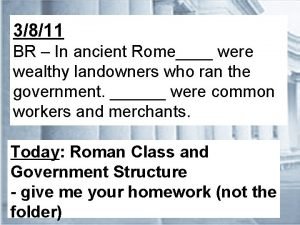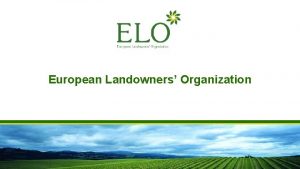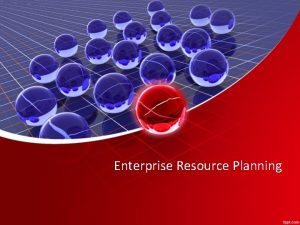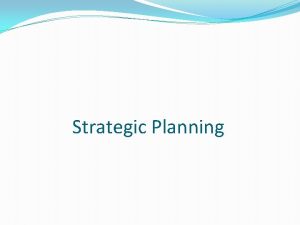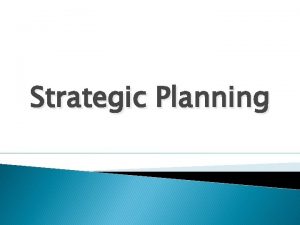Strategic Planning for Landowners Overview Strategic planning is








- Slides: 8

Strategic Planning for Landowners

Overview Ø Strategic planning is a process that provides direction and meaning to day-to-day activities. Ø For landowners, this process often involves preparing for a change in the dynamics of an existing operation. Ø Before you can begin any journey, you must define a specific destination. Likewise, in our business and personal endeavors, we must define our goals. Ø When you consider adding an alternative enterprise to your existing operation, a logical first step in the evaluation process involves defining what you hope to achieve from adding this activity and how this new activity fits within the framework of your existing operation. Ø In any endeavor, setting S. M. A. R. T. goals will help you achieve the intended result. Ø A S. M. A. R. T. goal is one that is: Specific, Measurable, Attainable, Related and Timely. Ø Measurable goals are important because they create a gauge by which success can be evaluated. Ø Attainable goals are those that can be achieved with the knowledge, skills, abilities, and resources available. Ø Finally, timely goals specify measurable results within a specified time frame and prevent procrastination from undermining success.

Types of Goals Ø There are three types of goals that can be defined for any new or existing enterprise – strategic, tactical and operational. Ø Strategic goals define what you are trying to achieve. When you have multiple goals, you must determine both what they have in common and where they may be in conflict. Ø Tactical goals define how you are planning to get to your destination and what landmarks you will pass along the way. Ø Operational goals are those day-to-day activities necessary to obtaining the tactical goals. They specify the manner in which the resources available will be used and combined.

Steps for Setting Goals 1) 2) 3) 4) Set a Positive Goal Set an attainable target date for achievement Write down your goal as a constant reminder Stay focused

Developing Your Goals Ø Ø Ø Ø Maximize profit or revenue Generate a reliable income stream Personal or commercial recreation or wildlife use Pride of ownership/Desire to maintain ownership Tax relief or land investment Livestock/Crop production or diversification Provide a future estate Quality of life

Resources Available Ø A resource inventory can help identify both underutilized and limited resources Ø The resource inventory should cover all resources that are currently available as well as those that would be needed to begin an alternative enterprise. Ø A resource inventory evaluates: Ø Natural resources – soils, plant species, rangeland condition, wildlife, water availability. Ø Capital resources – crop inventories, livestock enterprises, equipment. Ø Human resources – labor force, management, salaries/wages, work schedule, duties. Ø Physical resources – water facilities, working facilities, buildings, off-ranch resources. Ø Financial resources – outside income, profit and loss, cash flow, balance sheet statements.

Developing a Business Plan Ø It defines your business goals and direction Ø It forces you to think about your competition and the marketplace Ø It lets you clearly define your management and operating practices Ø It forces you to take a detailed look at your finances, profitability and cash flow

Components of a Business Plan Ø Ø Ø Ø Introductory elements Business description Resource inventory Marketing plan Operating plan Management plan Financial plan
